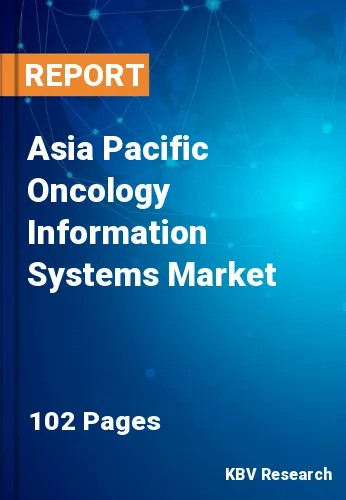The Asia Pacific Oncology Information Systems Market would witness market growth of 8.2% CAGR during the forecast period (2022-2028).
Oncology information systems are equipped with software and services used to manage and enhance cancer patient profiles and treatment, including complete information and image management. EHRs (electronic health records) are used to manage patient portfolios in healthcare facilities such as clinics, hospitals, and research labs. These programmers are used by healthcare organizations to exchange information about cancer patients and forecast treatment outcomes. As a result, oncology information systems improve the safety and effectiveness of cancer treatment. This increase in survival rates is made possible by helping doctors and surgeons choose the most appropriate treatments for patients.
The utilization of artificial intelligence (AI) in Oncology Information System will change cancer therapy and follow-up operations. With more specific and extensive analyses made possible by the employment of AI algorithms with OIS, the course of cancer treatment is anticipated to shift. Patients would benefit from a more targeted prognosis, which would support market growth.
China is also making efforts to lessen the economic strain on the underprivileged. By 2013, 12.56 million people, 42.4 percent of the poor overall, were living in poverty as a result of high medical costs, according to the NHFPC and the State Council's Leading Group Office of Poverty Alleviation and Development. The growth of the regional interventional oncology information system would soar throughout the forecast period as a result of the significant expenditure on medical and healthcare infrastructure throughout this region.
As per, the National Health and Family Planning Commission (NHFPC), the 2016 health budget is 1.24 trillion yuan, with medical spending growing at an average annual pace of more than 20% over the previous seven years. According to the commission, the ultimate goal of healthcare reform is to establish a national health surveillance system that is centered on ensuring that everyone has fair access to basic public health services. The budget is also used to support county-level or higher public hospital reform and renovations. According to the NHFPC, the central government will grant each county 3 million yuan annually to reach the goal while giving each city a lump-sum payment of 20 million yuan.
The China market dominated the Asia Pacific Oncology Information Systems Market by Country in 2021, and would continue to be a dominant market till 2028; thereby, achieving a market value of $269.8 Million by 2028. The Japan market is estimated to grow at a CAGR of 7.5% during (2022 - 2028). Additionally, The India market would witness a CAGR of 8.8% during (2022 - 2028).
Based on Offering, the market is segmented into Solutions (Patient Information Systems and Treatment Planning Systems) and Professional Services. Based on Application, the market is segmented into Medical Oncology, Radiation Oncology, and Surgical Oncology. Based on countries, the market is segmented into China, Japan, India, South Korea, Singapore, Malaysia, and Rest of Asia Pacific.
Free Valuable Insights: The Worldwide Oncology Information Systems Market is Projected to reach USD 3.4 Billion by 2028, at a CAGR of 7.4%
The market research report covers the analysis of key stake holders of the market. Key companies profiled in the report include Oracle Corporation (Cerner Corporation), Koninklijke Philips N.V., Varian Medical Systems, Inc. (Siemens Healthineers), ViewRay, Inc., Accuray, Incorporated, Elekta AB, RaySearch Laboratories AB (Nasdaq, Inc.), Brainlab AG, DOSIsoft SA (Institut de cancérologie Gustave Roussy), and MIM Software Inc.
By Offering
By Application
By Country
Our team of dedicated experts can provide you with attractive expansion opportunities for your business.

